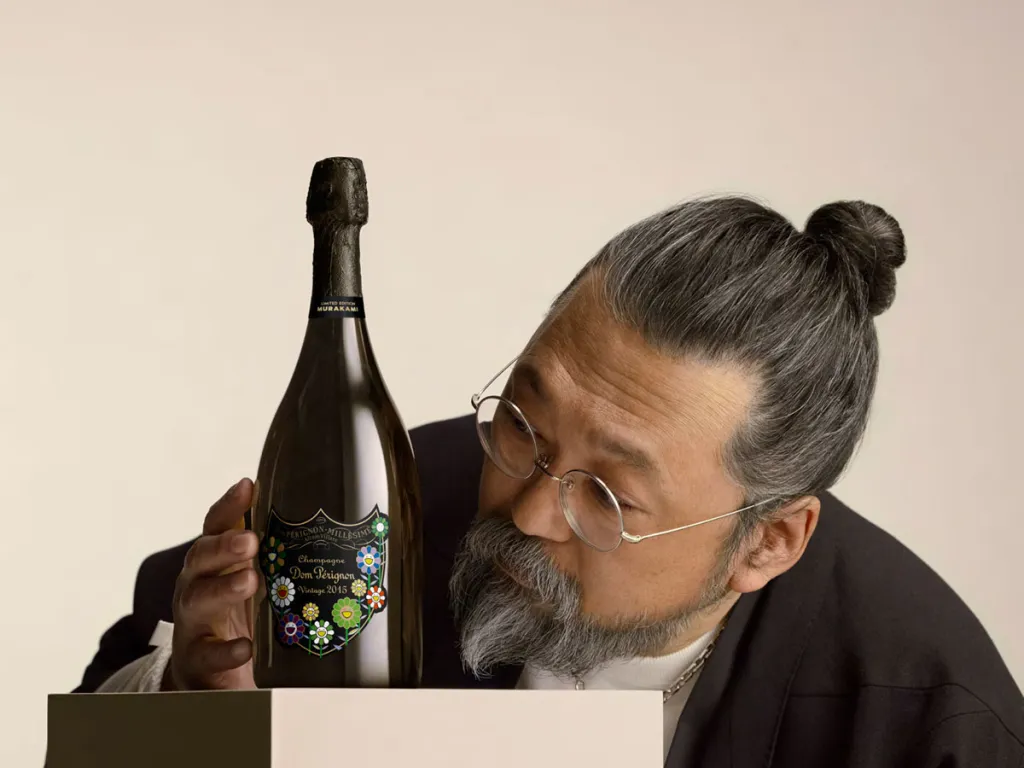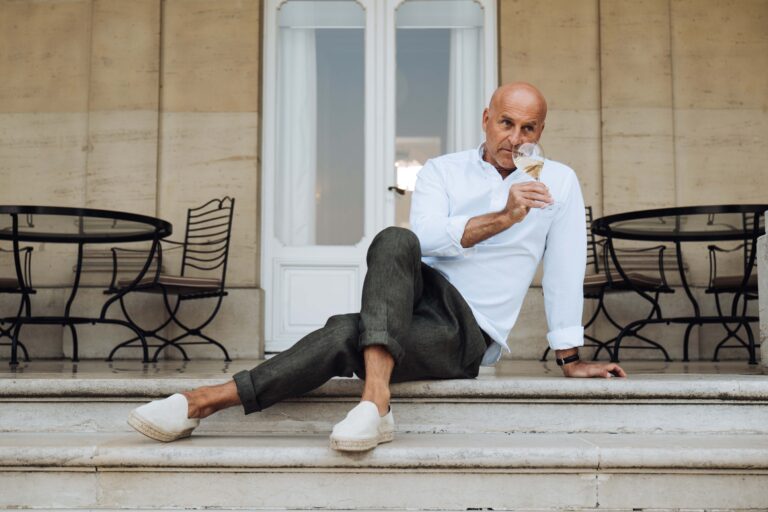Dom Perignon just released the Cuvée Dom Pérignon 2015 [Takashi Murakami Edition] [ read the full champagne story ]
Estimated reading time: 5 minutes

One arrives, eventually, at Dom Pérignon. It is unavoidable. It is the Everest of branding, the default answer for anyone who knows just enough about Champagne to utter a proper noun. And like Everest, it is often crowded, occasionally disappointing, but undeniably there. So when the new vintage, the 2015, descends from its lofty perch, one is obligated to acknowledge its arrival. And when it arrives dressed by the riotous imagination of Takashi Murakami, well, then it becomes a spectacle, doesn’t it? A high-low collision of monk-like austerity and animated chaos.
Let us first address the elephant in the crystal glass.
Dom Pérignon 2015: A Vintage of Necessary Optimism
The 2015 vintage in Champagne was, to put it mildly, a year of two halves. A summer of almost brutal heat and sunshine, followed by a harvest that demanded meticulous, almost surgical, selection. Many houses chose to skip. Not Dom Pérignon. For a house that stakes its entire reputation on only declaring a vintage in years of exceptional quality, a 2015 release is a statement. A statement, one suspects, of commercial imperative as much as genuine perfection.
But let us not be entirely cynical. The 2015, tasted blind, is a testament to the immense skill of Chef de Cave Vincent Chaperon and his team. It is, predictably, a wine of sun. The nose is generous, a bouquet of ripe stone fruit—apricot and nectarine—mingling with the signature Dom Pérignon smoky minerality and a hint of ginger and sweet spice. On the palate, it is broad, almost opulent, a rich texture balanced by a surprising vein of acidity that, one hopes, will carry it forward for a decade or two. It’s certainly not the razor-sharp, cerebral Dom Pérignon of cooler vintages. This is a wine that offers immediate gratification, a sun-kissed embrace rather than a whispered secret. It’s… pleasant. Competent. Everything one expects a Dom Pérignon to be, without quite being the groundbreaking revelation. It’s an easy listen. And sometimes, one supposes, that is enough.

Takashi Murakami: The Man Who Dares to be Delightful
Now, to the artist. If Dom Pérignon is the epitome of monastic discipline and whispered luxury, Takashi Murakami is its gleeful, technicolour antithesis. The man is a phenomenon. A graduate of Tokyo University of the Arts with a PhD in Nihonga painting, he promptly threw all traditional Japanese art rules out the window and invented his own: “Superflat.”
Superflat is both an aesthetic and a theory. A style that flattens traditional Japanese two-dimensional art into vibrant, almost cartoon-like imagery, blending manga, anime, and pop culture with historical Japanese painting. His work is instantly recognisable: smiling flowers, mischievous eyes, fantastical creatures, all rendered in brilliant, almost violent, colour. But beneath the saccharine surface lies a subversive intelligence. Murakami explores post-war Japanese identity, consumerism, and the blurry line between high art and commerce. He is a master of cultural critique, even as his work adorns Louis Vuitton bags and sells for millions. He is, to put it bluntly, a genius who understands perfectly that the fastest way to the wallet is often through the eye.

The Dom Pérignon x Takashi Murakami Edition: Art as (Expensive) Distraction
And so we arrive at the collaboration. Murakami has, for years, lent his joyous chaos to a special edition of the Dom Pérignon bottle and its accompanying box. The 2015 continues this tradition, featuring his iconic, psychedelic ‘Flower’ motif, often incorporating his signature character, Mr. DOB.
What does it add to the wine? Absolutely nothing. That, dear reader, is entirely the point. The liquid inside the bottle is precisely the same 2015 vintage we just discussed. The Murakami touch is entirely superficial, an expensive overcoat for an already expensive product. But it serves a purpose. It elevates the bottle from mere beverage to collectible objet d’art. It transforms the act of opening a bottle into a moment of curated cultural consumption.
Is it snobbery? Of course it is. But it’s a different kind of snobbery. It’s the snobbery of the visual, the snobbery of the collector, the snobbery that says, “I appreciate not only the liquid genius, but also the genius that adorns it, and I am willing to pay a premium for both.” It is a testament to the power of packaging, the allure of limited editions, and the eternal human desire for something that is both beautiful and slightly absurd.
In a world where almost everything is commodified, even our quiet moments of vinous contemplation, Murakami reminds us that luxury can be playful. Dom Pérignon reminds us that even with all the playful distraction, the wine itself must still, at a bare minimum, be good. The 2015 is good. The packaging, for those who care for such things, is wonderfully, hilariously loud. And that, I suppose, is its own kind of success.
Now, if you’ll excuse me, I’m off to find a truly exceptional bottle that doesn’t feel the need to shout.






